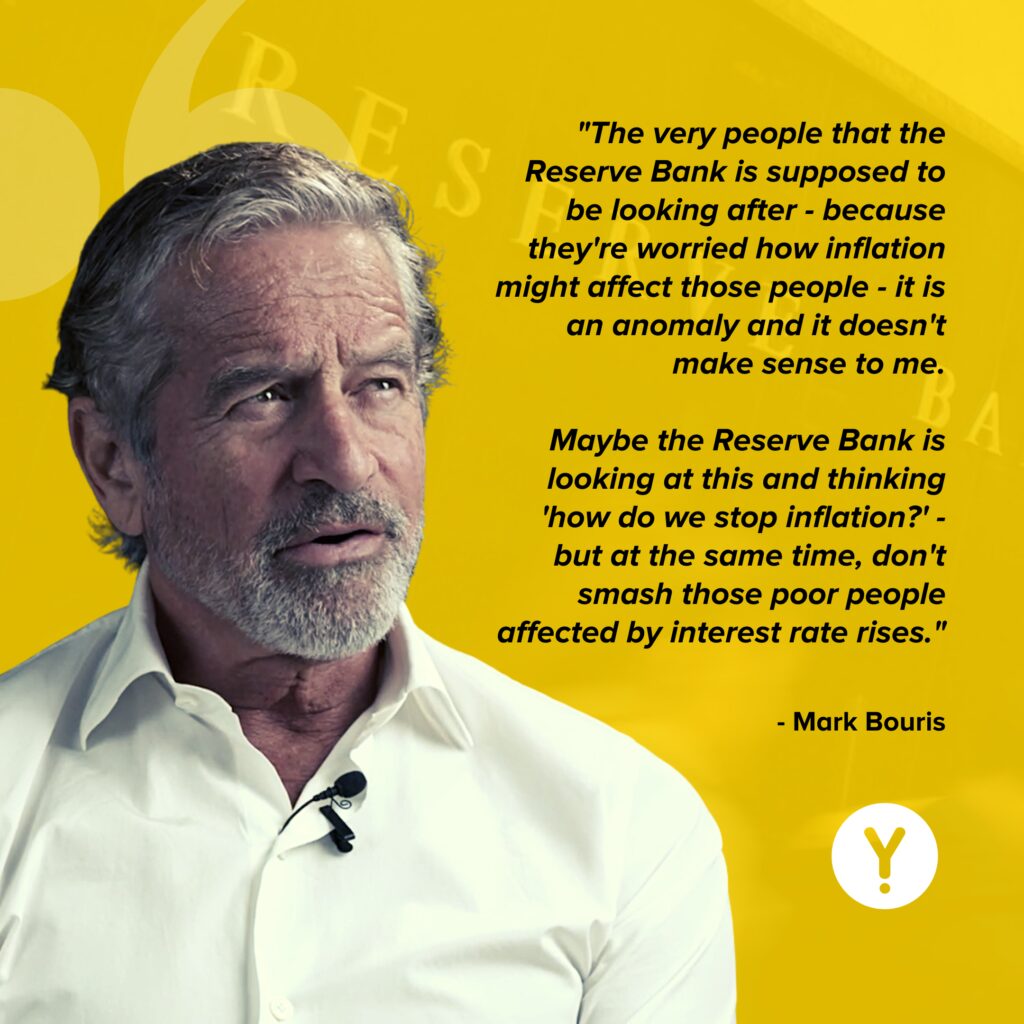In this article:

The Reserve Bank of Australia (RBA) is set to undergo its biggest overhaul in decades, with the current board set to lose its power to implement interest rate hikes.
Federal Treasurer Jim Chalmers announced the results of the first independent review into the RBA since 1990. The review announced 51 recommendations that are largely targeted at ensuring decisions affecting the official cash rate and interest rates will now consider a much broader range of inputs.
One key recommendation is for “better qualified” people to be involved in the decisions about monetary policy, which could have widespread outcomes for home owners and interest rates.
“If that is the outcome then I’m happy with that,” Mark Bouris told Channel Nine’s Today show.
“I am not happy with the RBA Governor and the decisions he has been making over the past 12 months.”
Review Recommendations: RBA Board to be split
All of the 51 recommendations made have been committed to in principle by the Federal Government, according to Treasurer Jim Chalmers.
“Australia faces a complex and rapidly changing environment, and we need the most effective central bank and monetary policy framework to meet current and future economic challenges,” he said.
“The Review found that the RBA is a well-regarded institution, with high-quality staff, that has served Australia well. It found that Australia’s monetary policy framework has contributed to good economic outcomes over the past three decades but identified a number of opportunities to strengthen it.”
Some strong criticism was levelled towards the RBA’s structure and operations, which have led to some key changes likely to be implemented, which include:
1. RBA set to lose rate setting power, with split panel board
The review recommended splitting the RBA board up into two separate governing bodies for implementing monetary policy.
The Monetary Policy Board will include six, new external members with the skills and experience to make decisions on interest rates and other aspects of monetary policy. It will also include the RBA Governor and Deputy Governor. Chalmers said this change “would provide a healthy counterbalance to the influence of internal members.”
In a media release, the RBA said, “The Review recommends the establishment of separate boards for monetary policy and governance of the Bank. This change can help strengthen both the operation of monetary policy and the way the Bank is governed.”
“The Bank will work constructively to ensure that this and the other recommended changes to the Reserve Bank Act strengthen the Bank and the way it operates. It will also work constructively with the Treasurer on an updated Statement on the Conduct of Monetary Policy.”
“The Review makes a number of recommendations regarding how the Board works, including the frequency of meetings and the Bank’s approach to communication. The Board will consider these issues over coming meetings and develop and implement a new set of arrangements.”
2. Improved transparency and accountability
The report recommended more rigorous governance procedures and increased transparency in decision-making, including regular public reporting on decisions and minutes from the board meetings.
The recommendations also included addressing growing concern about the lack of transparent communication to the public, a criticism which arguably developed from the RBA’s decision in 2022 to publicly announce it would not increase interest rates until 2024, a statement that proved to be drastically far from the truth.
The review proposed that the RBA should hold a press conference featuring the RBA governor after every monetary policy meeting (where the RBA decides on what to do with the official cash rate) and that the members of the monetary policy committee should address the public at least once a year.
If these changes were to be implemented, every Australian would have access to a more transparent process and be much more informed on the reasons behind RBA decisions and where monetary policy and interest rates are headed.
Human Impact of Rate Rises Finally Acknowledged
The recommendations announced today reflect growing public scrutiny on the RBA’s decisions to consistently and rapidly increase interest rates, without concern for the impacts on the welfare of borrowers around the country.
Mark Bouris, speaking on the Today show, said a recent human impact study commissioned by YBR Home Loans, highlighted just how significant an impact consecutive rate rises were having on the mental health and wellbeing of Aussie home-owners.
“We delivered a report to the Reserve Bank Governor and people most affected either lost their jobs, experienced sickness and had disabilities,” Bouris said.
“The very people that the Reserve Bank is supposed to be looking after the welfare of, because they are worried how inflation might affect those people, it is an anomaly and it doesn’t make sense to me.”
“Maybe the Reserve Bank is looking at this and thinking ‘how do we stop inflation but at the same time don’t smash those poor people affected by interest rate rises.”
“I think part of the recommendations are that they better get better qualified people to make decisions about monetary policy, that is putting interest rates up or down.”

So if that is the outcome, then I’m happy with that.” To access the results of the Human Impact Study, head to YBR’s Rate Watch, here.
What will this mean for you?
The shake-up of the RBA has been long overdue, at least according to the RBA Governor himself, who admitted, “that from a number of perspectives, the current oversight arrangements as me as governor for managing the bank fall short of contemporary standards.”
If implemented, we could see a better-functioning central bank in Australia. This could mean better outcomes for homeowners, as the new board members are likely to take into account a range of economic factors when setting the official cash rate.
It also means improved transparency and accountability from the RBA, which can only be viewed as a positive move for Australians. Overall it appears that the review and subsequent changes to the RBA are set to be a positive step for Australia’s economy, if implemented correctly.
Time will tell just how much of an impact these reforms have on monetary policy, but in the meantime it is important to stay informed and keep up with any developments as they occur.



